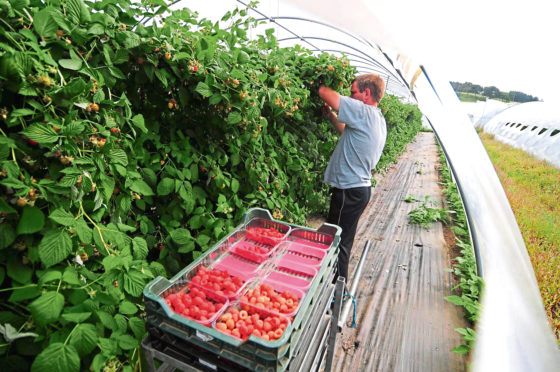Robotic harvesters could become commonplace on Scottish raspberry farms within five to 10 years.
Researchers at Plymouth University have built a prototype robotic arm which is capable of picking a raspberry without damaging it in 12 seconds.
The university’s Dr Michael Stoelen said once the robot is commercialised the picking time will be halved.
He said while human pickers would still be required, there could be significant cost savings for growers once robotic harvesting becomes a reality as labour often makes up more than 50% of costs.
“These initial robots will not replace manual labour. What we expect is that they will be able to pick the more accessible fruit with human pickers there to pick the fruit which the machine isn’t yet able too,” said Dr Stoelen, speaking at AHDB’s SmartHort conference.
“The challenge with designing robots such as these is not just in the delicate nature of the raspberry, but also ensuring they can cope with having people around them, as well as other complicating factors such as poles, sunlight and complex foliage.”
He said his team had used human biology as inspiration during the design process for the robots.
They developed an arm which mimics a human’s ability to shift between being robust and delicate when it needs to be.
“We looked at human muscles, such as the biceps and triceps, and the way humans can flex and stiffen those muscles depending on the situation,” added Dr Stoelen.
“We’ve also been using ‘deep learning’ to build a large database of raspberries which will make it easier for the robot to classify and grade them.”
The SmartHort conference was organised as part of AHDB’s campaign to help improve labour efficiencies in horticulture through robotics and automation, as well as labour management techniques.
